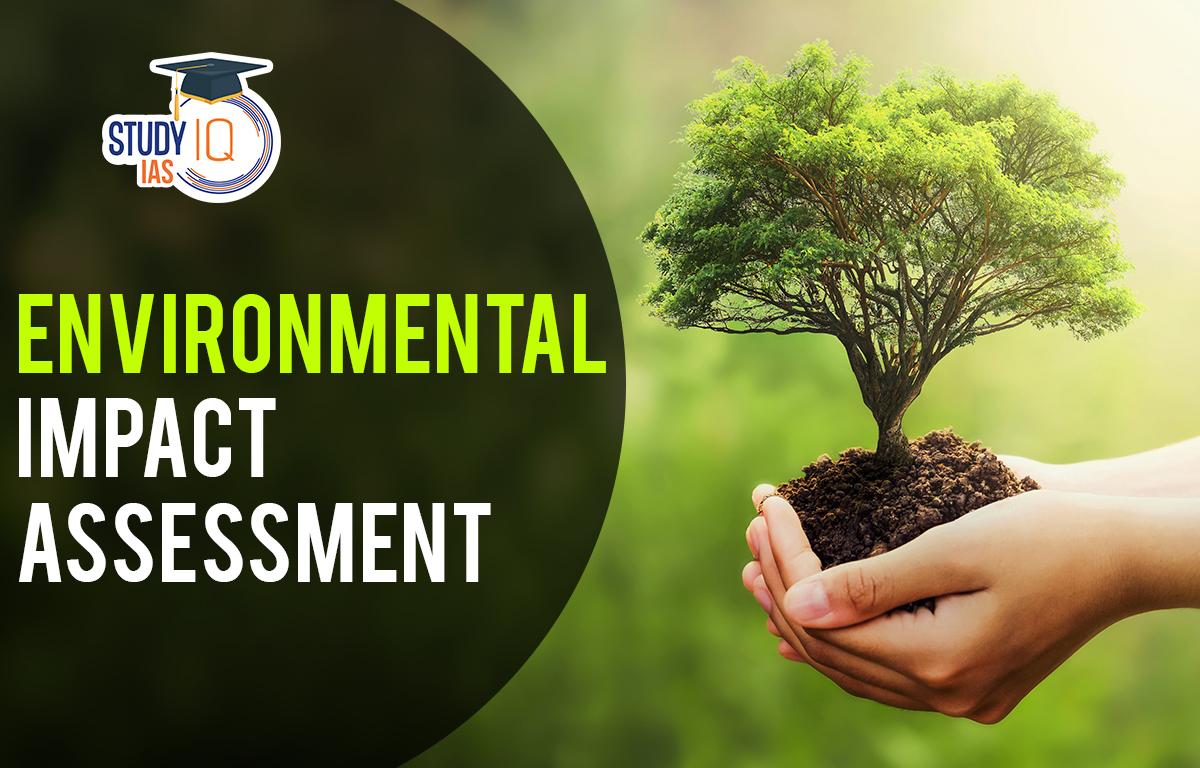Table of Contents
Environmental Impact Assessment
The purpose of an environmental impact assessment is to evaluate the environmental effects of a proposed project or development in relation to their interconnected socioeconomic, cultural, and health effects. EIA is a process that is used to assess the environmental effects of a planned development, to put it simply. Environmental Impact Assessment (EIA) is an important management tool for making sure that natural resources are used as effectively as possible for sustainable development. Early project planning cycle consideration of environmental effects and their mitigation provides various advantages, including environmental protection, optimal resource utilization, and time and cost savings.
Read about: National Parks in India
Environmental Impact Assessment History
The first Environmental Impact Assessment (EIA) was conducted in 1976–1977 when the Planning Commission asked the Department of Science and Technology to study river-valley projects. Before 1994, environmental approval from the central government was done informally. In 1994, under the Environmental (Protection) Act of 1986, the Ministry of Environment and Forests made it mandatory to get Environmental Clearance (EC) for new projects, as well as for extending or modernizing existing activities.
What is Environmental Impact Assessment?
Environmental Impact Assessment (EIA) is described by UNEP as a method for decision-making that can be used to determine the environmental, economic, and social effects of a project. EIA’s main goal is to assess environmental consequences early in project design, find strategies to lessen negative effects, adapt projects to the local environment, and present projections and options to decision-makers. Environmental impact assessments (EIAs) benefit both the environment and the economy. They can lower project costs and timelines, help avoid cleanup expenses, and reduce regulatory issues. The importance of the EIA process was officially recognized at the 1992 Earth Summit in Rio.
Environmental Impact Assessment in India
The first Environmental Impact Assessment (EIA) in India was done in 1976–1977 for river valley projects, following a directive from the Planning Commission. EIA was later expanded to include all projects needing approval from the Public Investment Board.
The Environment (Protection) Act of 1986 made EIA a legal requirement. Other important environmental laws include:
- Indian Wildlife (Protection) Act (1972)
- Water Act (1974)
- Air (Prevention and Control of Pollution) Act (1981)
- Biological Diversity Act (2002)
The Ministry of Environment, Forest, and Climate Change set up the Environmental Information System (ENVIS) in 1982.
ENVIS collects, stores, and shares environmental data through a web network. Its main goal is to coordinate national efforts in managing environmental information for better assessments.
Environmental Impact Assessment Process
Screening
The first stage of an EIA checks if the project needs an assessment and, if it does, how detailed that assessment should be.
Scoping
This phase finds the main issues and impacts that need more study. It also sets the limits and timeline for the research.
Impact Analysis
In this phase of the EIA, the project’s potential effects on the environment and society are identified, projected, and their importance is assessed.
Mitigation
This EIA stage suggests ways to reduce or avoid any possible harm to the environment from development activities.
Reporting
The decision-making body and other interested parties are presented with the EIA’s findings at this stage in the form of a report.
Review of EIA
It checks if the EIA report is complete and effective and provides the information needed for making decisions.
Decision-Making
Consultations are held between the impact assessment authority and the project proponent, who is assisted by a consultant (assisted by an expert group if necessary). The project’s final choice is made with EIA and EMP in mind (Environment Management Plan).
Post Monitoring
Once the project starts, this stage kicks in. It checks that the project’s impacts stay within legal limits and that the plans to reduce any negative effects, as outlined in the EIA report, are being followed.
Environmental Impact Assessment Significance
Facilitates Sustainable Development
The natural environment is under tremendous pressure now as a result of manmade activities including rapid industrialization, mass industry, and forest destruction. EIA tools assist in striking a balance between the necessity of economic growth and the equally crucial concept of sustainability.
Mitigating Negative Impacts & Informed Decision-Making
Environmental Impact Assessment (EIA) helps reduce the negative effects of development projects. It allows for monitoring programs to check potential impacts and provides information for managers to make smart decisions to protect the environment.
Aids Cost-Effectiveness
EIA improves cost effectiveness by helping choose and design projects that are sustainable in the long run. Early assessments can prevent future damages that might occur if a project is found to be environmentally harmful later. It’s usually more expensive to make changes once a project is already underway.
Environment Impact Assessment (EIA) Shortcomings
Applicability
The notifications are not required for a number of initiatives that have an impact on the environment as in small-scale sand mining.
Inadequate Capacity of EIA Approval Authorities
Crony capitalism leads to a mix of corporate interests and politicians, which can result in poor decisions. Without enough technical and environmental experts, projects that harm the environment may get approval.
Deficiencies in Screening, Scoping and Impact Analysis
Project evaluations often lack independent organizations or standard methods. This makes impact predictions unreliable since there’s no baseline data. The evaluations are usually done by company employees, creating a conflict of interest. During the scoping process, negative effects on forests, the environment, and local tribes are often ignored.
Poor Quality EIA Reports
EIA is currently utilized more as a tool for project justification than for project planning, which hinders efforts to achieve sustainable development. Along with the project’s justification, consideration should also be given to future activity planning. EIA is a tool that can be used to determine if a project is a good idea or not, but it can also be used to determine how any environmental harm can be reduced in order to make a project pollution-free and environmentally sustainable.
Initiated at a Later Stage
In India, the EIA process starts too late, usually after a project is already designed, approved, and almost ready to build. By the time the EIA begins, a lot of money has already been spent, making it hard to cancel the project.
Inadequate Public Participation
Public participation is required at various points of the EIA process (such as screening, scoping, report writing, and decision making) in several nations, such as Nepal, Argentina, and Australia, although it only happens once in India throughout the entire process. The EIA notification from 2006 states that there are two approaches to conduct this public consultation. First, stakeholders are requested to submit written comments on the draught EIA report. Second, a public hearing is held at or close to the location of the potential project.
Other Indian Geography Topics
Other Fundamental Geography Topics


 Story of Meera Bai and Her Devotion For ...
Story of Meera Bai and Her Devotion For ...
 Desert Climate, Distribution, Climatic C...
Desert Climate, Distribution, Climatic C...
 Deserts of India Map, Features of Thar D...
Deserts of India Map, Features of Thar D...





















